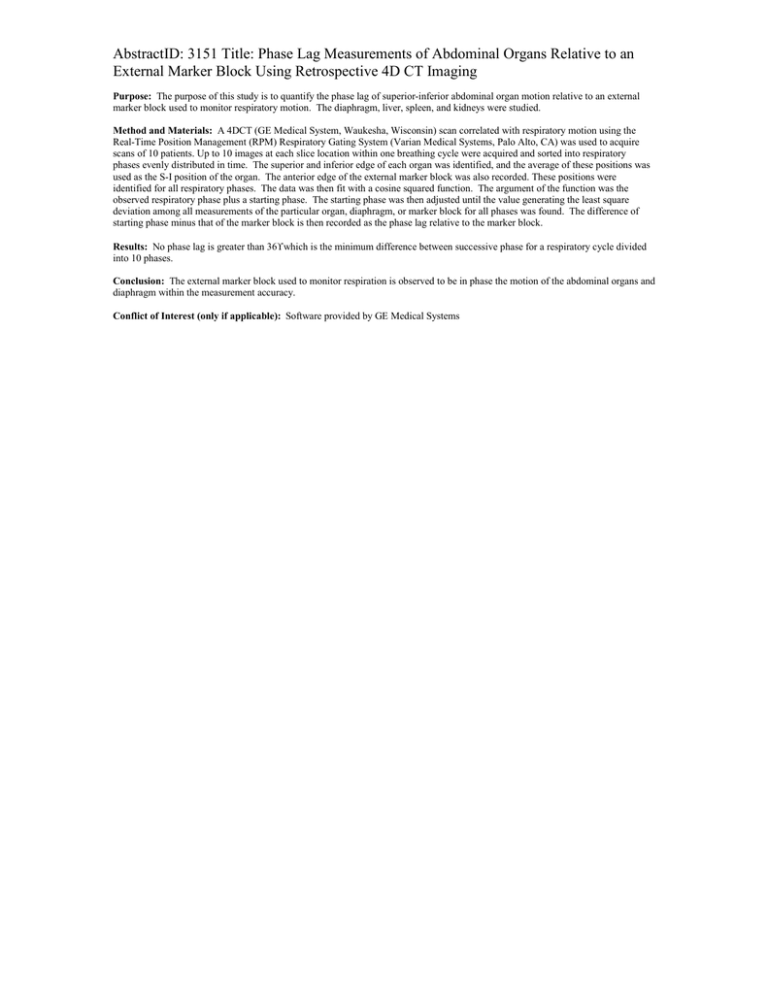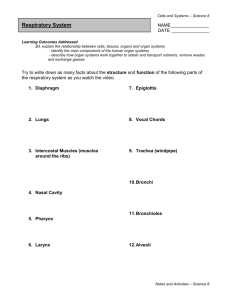AbstractID: 3151 Title: Phase Lag Measurements of Abdominal Organs Relative... External Marker Block Using Retrospective 4D CT Imaging
advertisement

AbstractID: 3151 Title: Phase Lag Measurements of Abdominal Organs Relative to an External Marker Block Using Retrospective 4D CT Imaging Purpose: The purpose of this study is to quantify the phase lag of superior-inferior abdominal organ motion relative to an external marker block used to monitor respiratory motion. The diaphragm, liver, spleen, and kidneys were studied. Method and Materials: A 4DCT (GE Medical System, Waukesha, Wisconsin) scan correlated with respiratory motion using the Real-Time Position Management (RPM) Respiratory Gating System (Varian Medical Systems, Palo Alto, CA) was used to acquire scans of 10 patients. Up to 10 images at each slice location within one breathing cycle were acquired and sorted into respiratory phases evenly distributed in time. The superior and inferior edge of each organ was identified, and the average of these positions was used as the S-I position of the organ. The anterior edge of the external marker block was also recorded. These positions were identified for all respiratory phases. The data was then fit with a cosine squared function. The argument of the function was the observed respiratory phase plus a starting phase. The starting phase was then adjusted until the value generating the least square deviation among all measurements of the particular organ, diaphragm, or marker block for all phases was found. The difference of starting phase minus that of the marker block is then recorded as the phase lag relative to the marker block. Results: No phase lag is greater than 36° which is the minimum difference between successive phase for a respiratory cycle divided into 10 phases. Conclusion: The external marker block used to monitor respiration is observed to be in phase the motion of the abdominal organs and diaphragm within the measurement accuracy. Conflict of Interest (only if applicable): Software provided by GE Medical Systems



